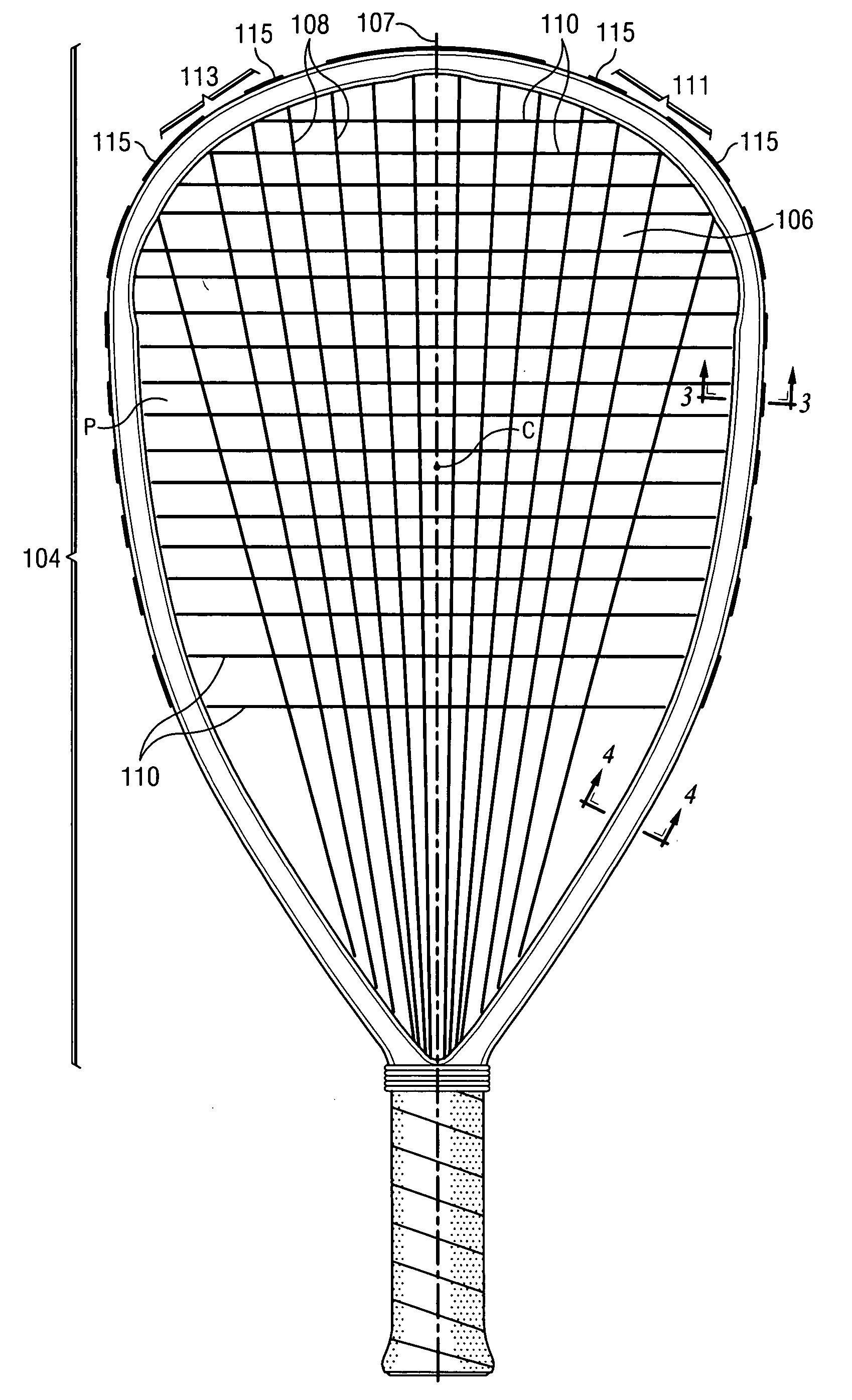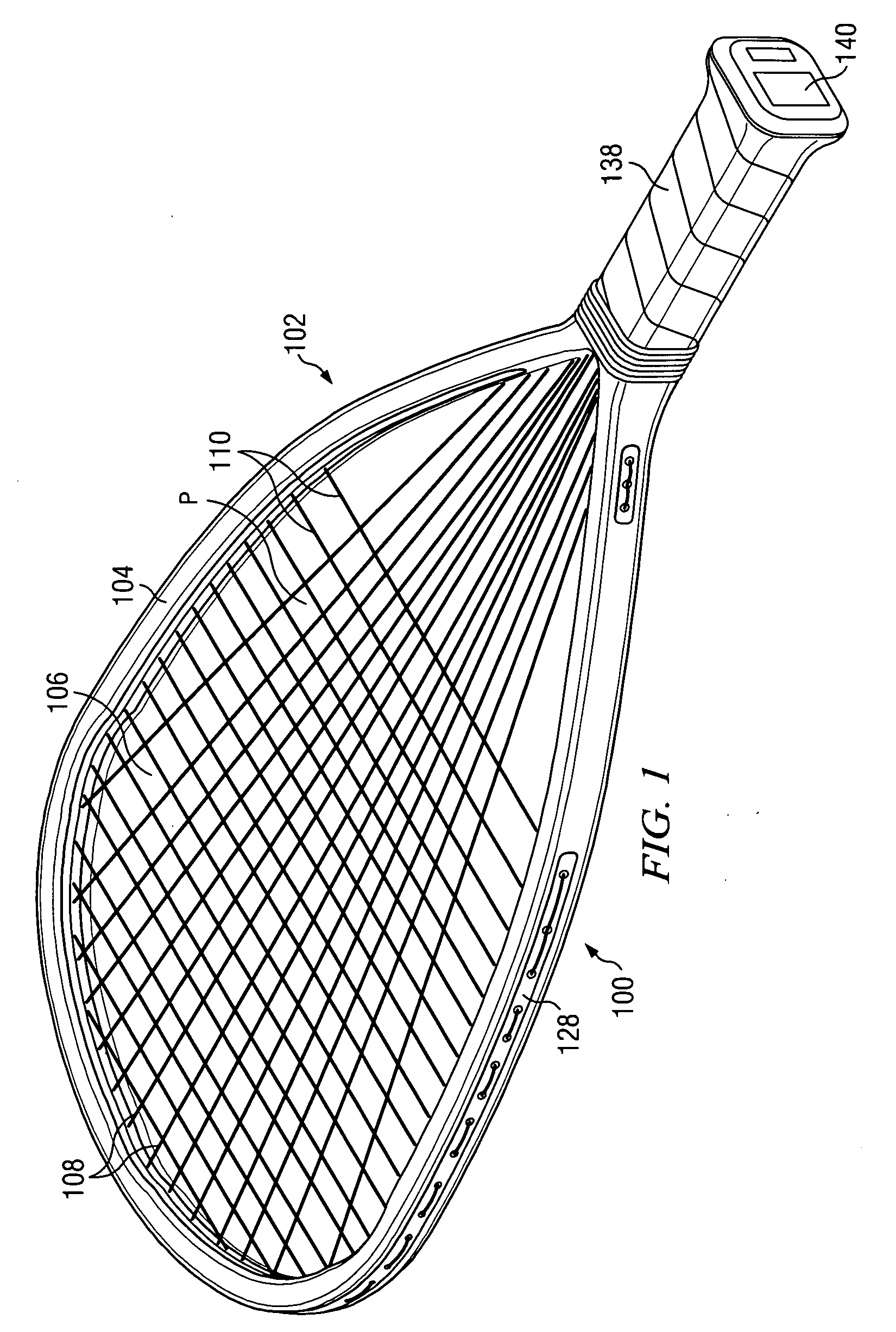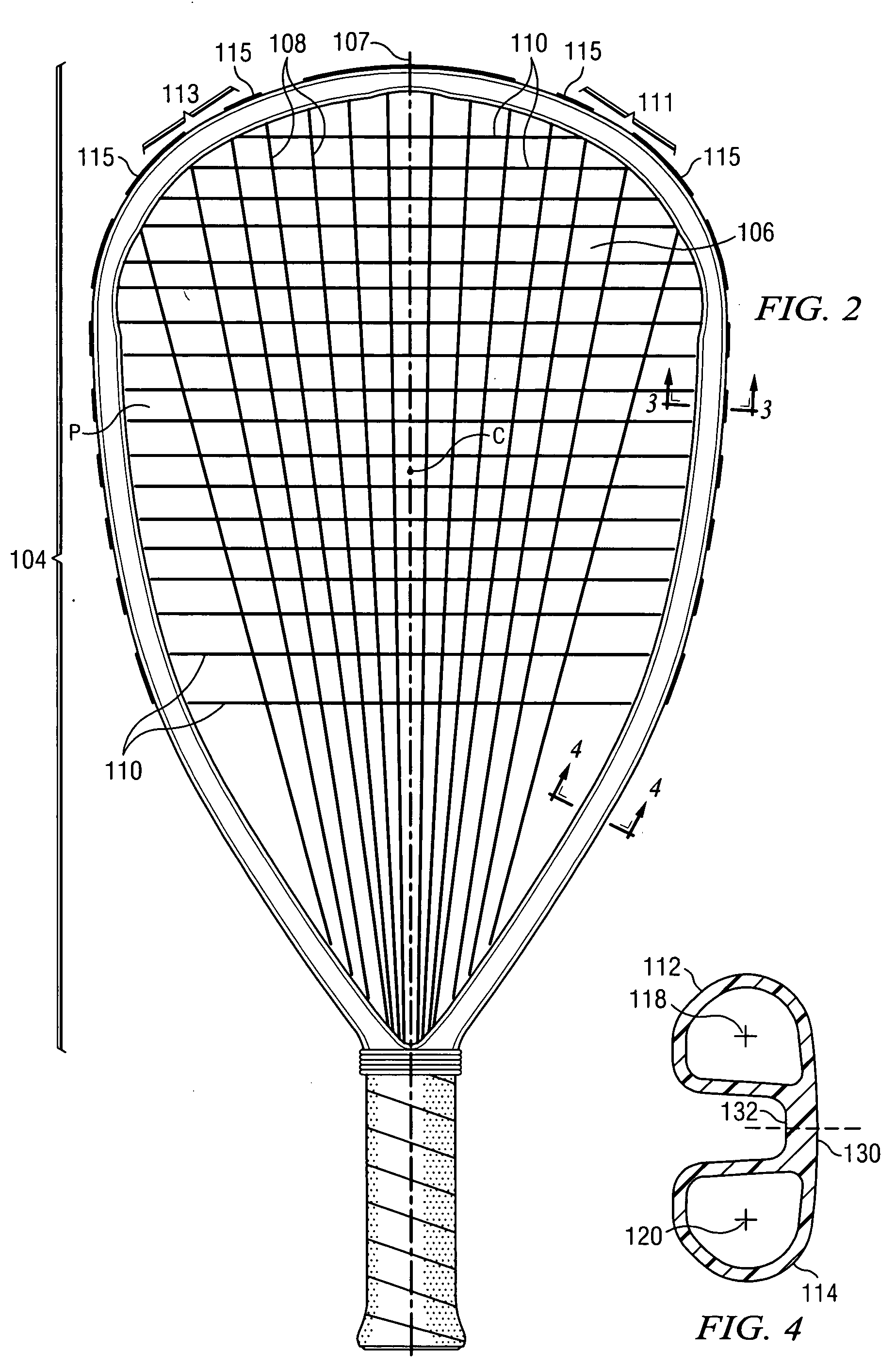Composite racquet with double tube head frame
a technology of double tube and composite racquet, which is applied in the field of composite racquet with double tube head frame, can solve the problems of many limitations of materials, significant weight limitations of aluminum extrusions, and differences in engineering problems associated with them, and achieves superior strength, stiffness and weight properties, and increases the effective strung area of the racquet.
- Summary
- Abstract
- Description
- Claims
- Application Information
AI Technical Summary
Benefits of technology
Problems solved by technology
Method used
Image
Examples
examples
[0069] To demonstrate the technical advantages of the structure of the present invention over prior art and other structures, a series of tests was performed on a racquet according to the invention and having the morphology shown in FIGS. 1-4, and also on other racquet structures. FIGS. 8, 9 and 10A-10D are representative cross-sectional views of these other tested structures.
[0070]FIG. 8 is a cross-sectional view of a prior art composite racquetball racquet frame. This cross section is basically an oval 200 with an indentation on one side. “Traditional oval” racquet 202 was constructed of composite materials similar to those used in the present invention and substantially the same as those in the sample according to the invention that was tested herein.
[0071]FIG. 9 is a cross-sectional view of a prior art aluminum racquetball racquet frame 204. “Aluminum traditional oval” frame 204 has a pair of internal supports 206, 208 for purposes of stiffening. The control of the placement o...
PUM
 Login to View More
Login to View More Abstract
Description
Claims
Application Information
 Login to View More
Login to View More - R&D
- Intellectual Property
- Life Sciences
- Materials
- Tech Scout
- Unparalleled Data Quality
- Higher Quality Content
- 60% Fewer Hallucinations
Browse by: Latest US Patents, China's latest patents, Technical Efficacy Thesaurus, Application Domain, Technology Topic, Popular Technical Reports.
© 2025 PatSnap. All rights reserved.Legal|Privacy policy|Modern Slavery Act Transparency Statement|Sitemap|About US| Contact US: help@patsnap.com



